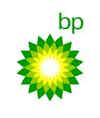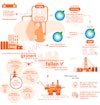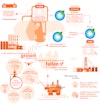
Ambitions
BP has set targets and aims to reduce emissions in its operations:
-
Zero net growth in emissions from operations through 2025.
- In 2018, BP achieved zero net growth in operational emissions with no offsets required.
-
3.5 Mte of sustainable greenhouse gas (GHG) emissions by 2025.
- In 2018, the company achieved 2.5 Mte of sustainable GHG emissions reductions since 2016.
-
Targeting methane intensity of 0.2% and not more than 0.3%.
- In 2018, BP reduced total methane emissions more than 10% and achieved a methane intensity of 0.2%.
BP has linked the pay of approximately 36,000 of its employees, including executive directors, to the company’s progress on delivering the 3.5 Mte target. This underscores the importance placed on this work, and the company expects it to incentivize even more ideas and activity.

Investments
BP has been in the renewable energy business for over 20 years. The company remains one of the largest operators, among its peers and is expanding in areas where it sees opportunities for growth.
- Solar: BP has partnered with Lightsource, Europe’s largest solar development company. It is investing $200 million over three years and holds a 43% stake in the company.
- Biofuels: BP has partnered with Bunge, a leader in agriculture, food, and ingredients, to create a global scale, highly efficient producer of sugarcane ethanol in Brazil called Bunge Bioenergia. Ethanol produced from sugarcane is one of the most carbon efficient biofuels available globally, with life cycle GHG emissions around 70% lower than conventional hydrocarbon transport fuels.
- Biopower: The company is creating this low carbon power source by burning bagasse, the fibre that remains after crushing sugarcane stalks. In 2018, BP generated 892 gigawatts per hour (GW/h) – enough to supply power to 1.25 million people in Brazil.
- Wind: BP has significant interests in onshore wind energy in the U.S. It operates nine sites in six states and holds an interest in another facility in Hawaii. The net generating capacity from its U.S. portfolio is enough to power almost 400,000 homes.
Advancing New Technologies
BP is working to achieve zero net growth in its emissions and new technologies. In future BP-operated oil and gas processing projects, the company will deploy continuous measurement, including instruments such as gas cloud imaging, to measure methane emissions. The deployment of this technology represents a major change in the oil and gas industry’s approach to detecting, quantifying, and reducing methane emissions. Continuous measurement technology will help BP detect methane emissions in real time.
Innovation
BP has set out ambitions to (1) lower emissions from gas, (2) develop more efficient and lower carbon fuels, lubricants, and petrochemicals, and (3) offer low carbon products to its customers.
- Producing more natural gas, which generates half the emissions of coal when burned to generate power.
- Lowering the carbon content in its chemicals: BP’s PTAir, used to make items such as clothes and plastic food packaging, has a carbon footprint almost 30% lower than the average European PTA.
- Creating 20+ carbon neutral products and services through the use of advanced technology and the company’s offsetting program, Target Neutral.
In 2018, BP launched the Advancing Low Carbon accreditation program, which aims to inspire every part of BP to identify lower carbon opportunities. Since the program’s inception, its businesses have been encouraged to change the way they operate with the accreditation of over 50 projects that deliver a better carbon outcome.
For more information: bp.com/sustainability.





